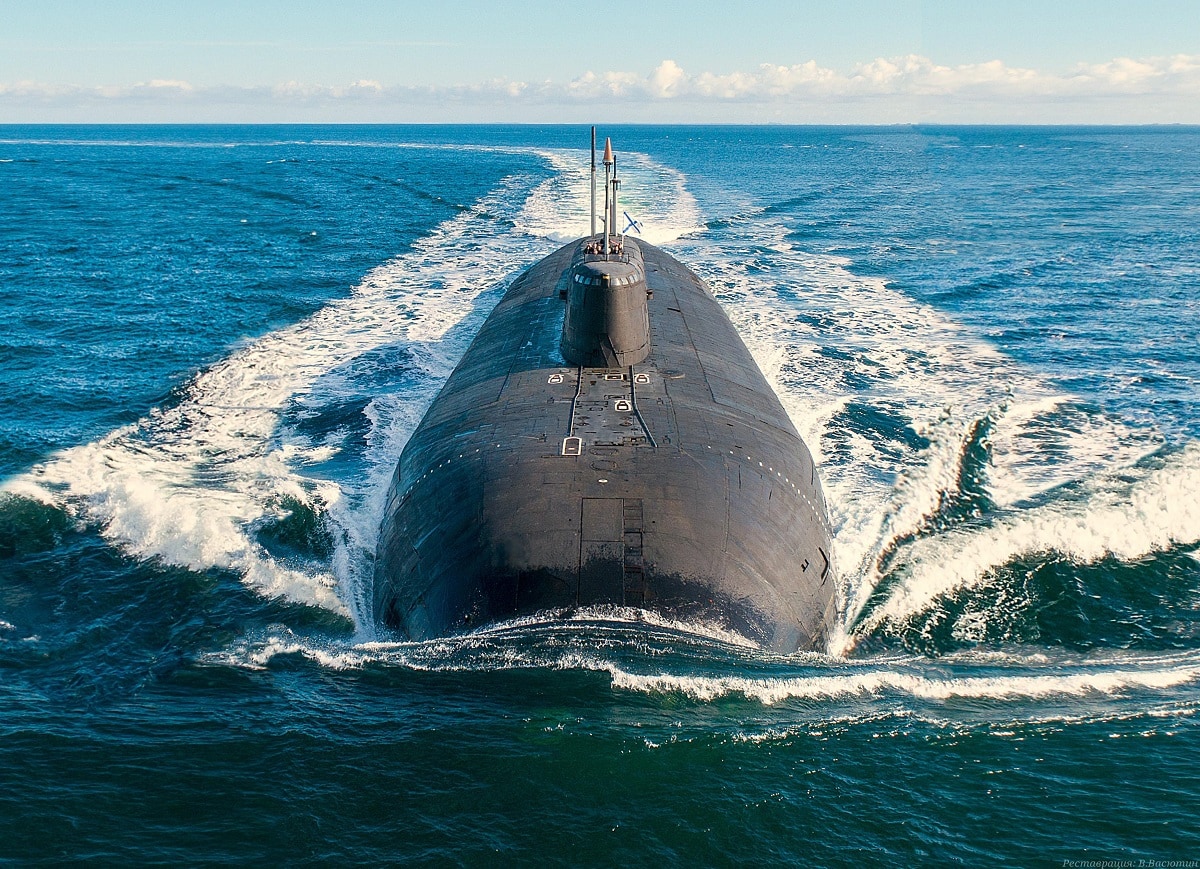Russia has bragged about its vaunted Belgorod advanced submarine that can launch underwater combat drones, including the Poseidon nuclear-powered and nuclear-tipped drone torpedo, known as a “doomsday” weapon. Western intelligence thought a test of the Poseidon was imminent as the Belgorod was recently sailing in the Arctic. But the U.S. Navy spotted the Belgorod leaving the area of operations without evidence of a test. Now the Russian sub may not return to the Arctic since the waters ice up during winter.
Poseidon: Small Failure or Big Failure for the Russian Navy?
The United States believes the test failed because the Russian sailors are “ill-trained” and equipped with arms systems such as the Poseidon that they have over-promised and under-delivered.
CNN reported on November 10 that this development is a result of Western sanctions taking a bite out of spare parts and microprocessors needed for advanced weapons. Russia has a shortage of high-tech equipment, according to the U.S. diplomatic source, and the sanctions must continue.
Russian Nuclear Test Could Be Coming Soon
Vladimir Putin’s nuclear saber rattling has analysts (including this author) predicting that the Russian supreme leader would attempt a nuclear test of either a tactical battlefield low-yield weapon or perhaps something that could be sea-launched.
Background on the Belgorod and Poseidon
The Belgorod is one of the most advanced and hyped Russian submarines. It is Russia’s largest sub and is designed to be a “mothership” for underwater unmanned vehicles. The Belgorod may have up to six Poseidon torpedo drones on board. These are estimated to weigh 100 tons and can travel at 70 knots. The Poseidon is thought to be 65 feet long and six feet in diameter.
Doomsday Weapon Would Spray Deadly Radioactive Sea Water
State-run television personalities have bragged that the Poseidon could create a nuclear explosion that would cause a “tsunami” that would overwhelm and “drown” Great Britain and coastal cities in the United States with “radioactive sea water.”
Poseidon: Ultra-long Range with Nuclear Propulsion
American officials previously thought the Poseidon would not be operational until 2027. The Russians may beat that timeline by a few years, even though it missed its test window recently. The Poseidon would have long range due to its nuclear-powered propulsion. The Russian navy believes it could be launched over 5,000 nautical miles away and hit a target.
Threat to Cities and Ships
Poseidon may carry a two megaton warhead that could be exploded close to shore, or it could be aimed at carrier battle groups to eliminate several American ships at once. Arms treaties such as New START have no provisions to limit weapons such as the Poseidon.
Belgorod Is the Parent to Other Subs
The Belgorod is one of the most quiet and deep-diving subs in the Russian navy. These capabilities may enable the boat to team with smaller robotic submarines that would give the mothership better ability to scan more ocean space and detect threats from long range.
What the Experts Told 19FortyFive on Posiedon
James R. Holmes, the J. C. Wylie Chair of Maritime Strategy at the U.S. Naval War College, said the Poseidon is part of a broader nuclear strategy. The Russian military is fearful of U.S. missile defense efforts over the years, he believes, and the Americans are trying to negate their ballistic-missile arsenal under the pretense of stopping rogue nuclear states.
Holmes said, “The nuclear-powered torpedo lets Russian counterstrikes—or, I suppose, first strikes—swim underneath missile defenses, guaranteeing Moscow an extra second-strike capability. And as we’ve known since the 1950s, an assured second-strike capability is the gold standard of nuclear deterrence. Nothing here upsets the logic of deterrence as we’ve known it all our lives.”
So, the Poseidon could not only be a tactical weapon, but it also could be strategic. The questions are – when will it become operational, and could U.S. sanctions stymie its development? The U.S. Navy thus has another headache on its hands if this doomsday weapon continues to advance beyond test status. Meanwhile, the Belgorod looks to be a formidable submarine that naval intelligence should watch closely.
Expert Biography: Serving as 1945’s Defense and National Security Editor, Dr. Brent M. Eastwood is the author of Humans, Machines, and Data: Future Trends in Warfare. He is an Emerging Threats expert and former U.S. Army Infantry officer. You can follow him on Twitter @BMEastwood. He holds a Ph.D. in Political Science and Foreign Policy/ International Relations.

